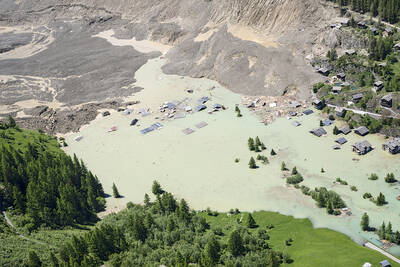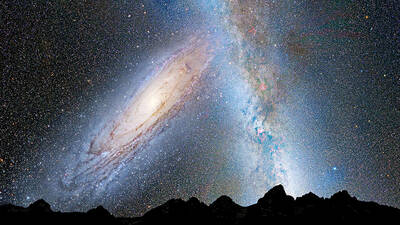Foreigners keen to get married in the opulent and colorful style of Indian maharajas are heading in increasing numbers for Rajasthan, the desert state in northwest India, that boasts more princely families and fairy tale palaces than any other part of India.
Rajasthan has always been popular with tourists but tour operators say that it has now become a wedding destination for Europeans and Americans seeking a grandeur to make their marriages memorable.
"I get over 20 inquiries every month. Every month, at least four or five foreign couples get married here. They know we have a rich cultural heritage and they want the works -- all the rituals and ceremonies of a traditional Indian wedding such as the mehndi (henna ceremony) and sangeet (musical evening)," said Ankit Bhargava, director, Regal Weddings in Udaipur.
Bhargava, like other tour operators, is promoting Rajasthan as a unique venue where couples can enjoy a truly royal wedding with decorated elephants, camels and horses, ancient forts and palaces, big brass bands, processions, pathways lined with petals, liveried palace guards holding lances and flaming torches, swirling dancers, and fireworks.
A celebrity photographer couple -- Briton Nigel Parry, 43, who is based in New York and his American wife Melanie Dunea, 35 -- exchanged vows on New Year's Eve at Devi Garh Castle.
"It was magical, indescribable. I wore a traditional red silk bridal outfit and sat on a decorated elephant with my father. Our procession went on for 2km and had a band in it, horses, camels and folk dancers. I exchanged garlands with Nigel and we were showered with rose petals. The castle was totally lit up. It was a dream come true," said Dunea.
Saira Mehmood, a 30-year-old singer from London of Pakistani extraction, got married to her British fiance Stephen at Devi Garh last year. She chose the castle because she wanted the pageantry of an Indian wedding but without the turmoil of pleasing both families if the venue had been in London.
"We wanted a spectacular location and that's what we got. I drove in an open top red Chevrolet with guards, horses and camels alongside. It was an Indian fantasy, very moving and special," she said.
Stephen, who works in music PR, said Devi Garh "surpassed" all his expectations: "My wife-to-be had been eating up my brain about this place for months but she was right. It is the place to get married."
If weddings in Rajasthan are lavish, it's because India's maharajas know how to put on a great show. Insane extravagance used to be a hallmark of nearly all these families, from architecture, jewels, food and sex to the armies of servants employed in their palaces.
Their legendary extravagance used to dazzle even European royalty. The wedding of Maharani Gayatri Devi of Jaipur, for example, was so lavish that it made it into the Guinness Book of Records.
The erstwhile maharajas of Rajasthan have been entertaining tourists in royal style since 1971 when Indira Gandhi divested them of their titles, abolished the privy purse and demoted them to the rank of ordinary citizen of a democratic republic -- much to their chagrin.
Suddenly, they had to figure out the tricky business of earning a living. Most soon realised that the best way of earning a living was to turn their fabulous properties into heritage hotels. One example of a particularly successful prince-turned-hotelier is the Maharana of Mewar in Udaipur, Arvind Singh. With 1,500 years of history behind it, the house of Mewar is the oldest dynasty in the world and he is its 76th Maharana.
His palaces provide a majestic backdrop for weddings. "We can organize pageantry in a way that simply can't be done anywhere else. Just one palace alone offers so many different venues for different functions -- courtyards, pavilions, durbar halls, and rooftop terraces," said a marketing agent for Singh's HRH Group of Hotels.
Royal weddings don't come cheap. A five-day affair involving around 120 people at Shiv Niwas can cost approximately US$250,000. A four-night affair at Devigarh for 100 people could set you back over US$100,000.

The collapse of the Swiss Birch glacier serves as a chilling warning of the escalating dangers faced by communities worldwide living under the shadow of fragile ice, particularly in Asia, experts said. Footage of the collapse on Wednesday showed a huge cloud of ice and rubble hurtling down the mountainside into the hamlet of Blatten. Swiss Development Cooperation disaster risk reduction adviser Ali Neumann said that while the role of climate change in the case of Blatten “still needs to be investigated,” the wider impacts were clear on the cryosphere — the part of the world covered by frozen water. “Climate change and

Poland is set to hold a presidential runoff election today between two candidates offering starkly different visions for the country’s future. The winner would succeed Polish President Andrzej Duda, a conservative who is finishing his second and final term. The outcome would determine whether Poland embraces a nationalist populist trajectory or pivots more fully toward liberal, pro-European policies. An exit poll by Ipsos would be released when polls close today at 9pm local time, with a margin of error of plus or minus 2 percentage points. Final results are expected tomorrow. Whoever wins can be expected to either help or hinder the

DENIAL: Musk said that the ‘New York Times was lying their ass off,’ after it reported he used so much drugs that he developed bladder problems Elon Musk on Saturday denied a report that he used ketamine and other drugs extensively last year on the US presidential campaign trail. The New York Times on Friday reported that the billionaire adviser to US President Donald Trump used so much ketamine, a powerful anesthetic, that he developed bladder problems. The newspaper said the world’s richest person also took ecstasy and mushrooms, and traveled with a pill box last year, adding that it was not known whether Musk also took drugs while heading the so-called US Department of Government Efficiency (DOGE) after Trump took power in January. In a

It turns out that looming collision between our Milky Way and Andromeda galaxies might not happen after all. Astronomers on Monday said that the probability of the two spiral galaxies colliding is less than previously thought, with a 50-50 chance within the next 10 billion years. That is essentially a coin flip, but still better odds than previous estimates and farther out in time. “As it stands, proclamations of the impending demise of our galaxy seem greatly exaggerated,” the Finnish-led team wrote in a study appearing in Nature Astronomy. While good news for the Milky Way galaxy, the latest forecast might be moot